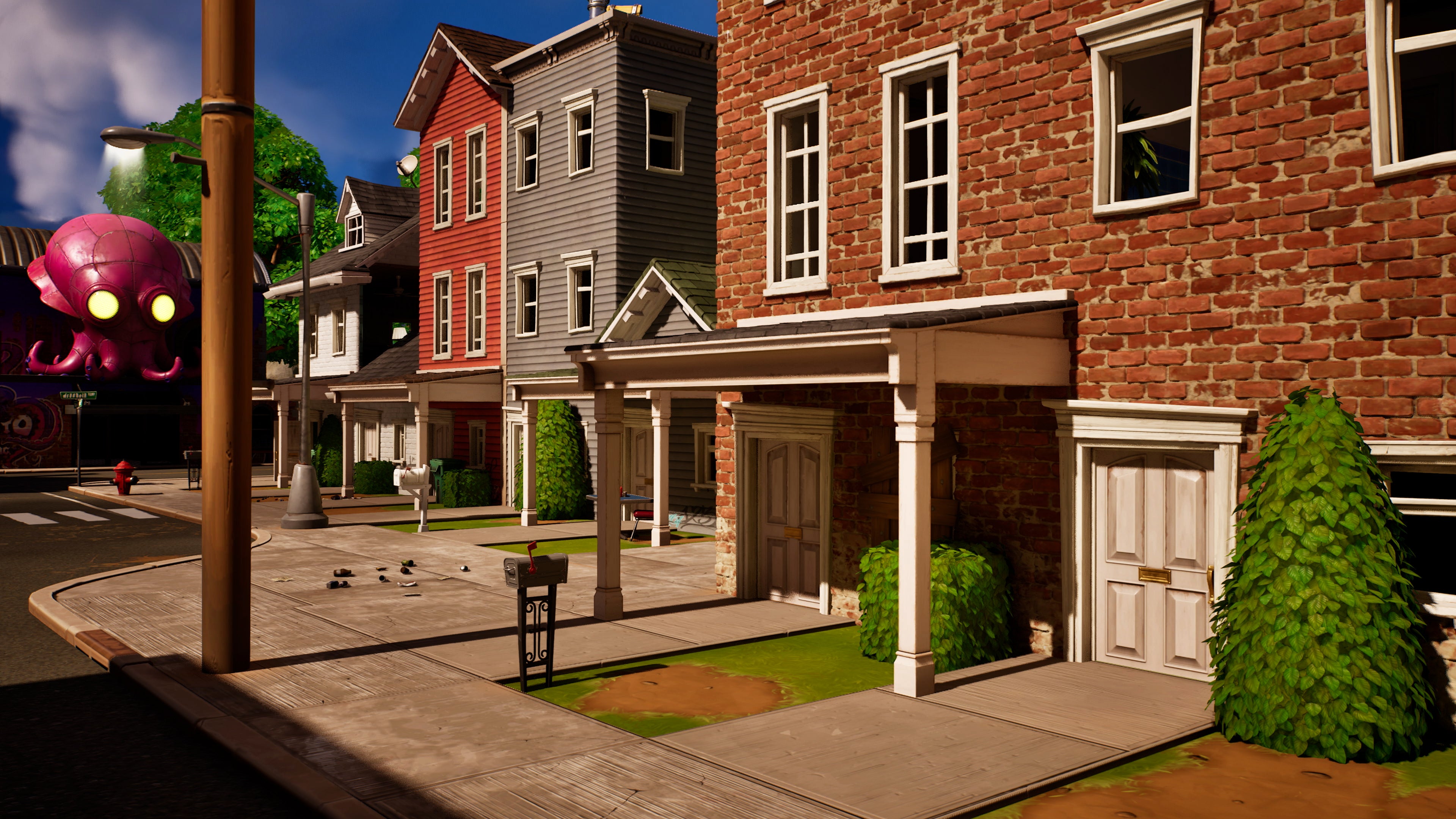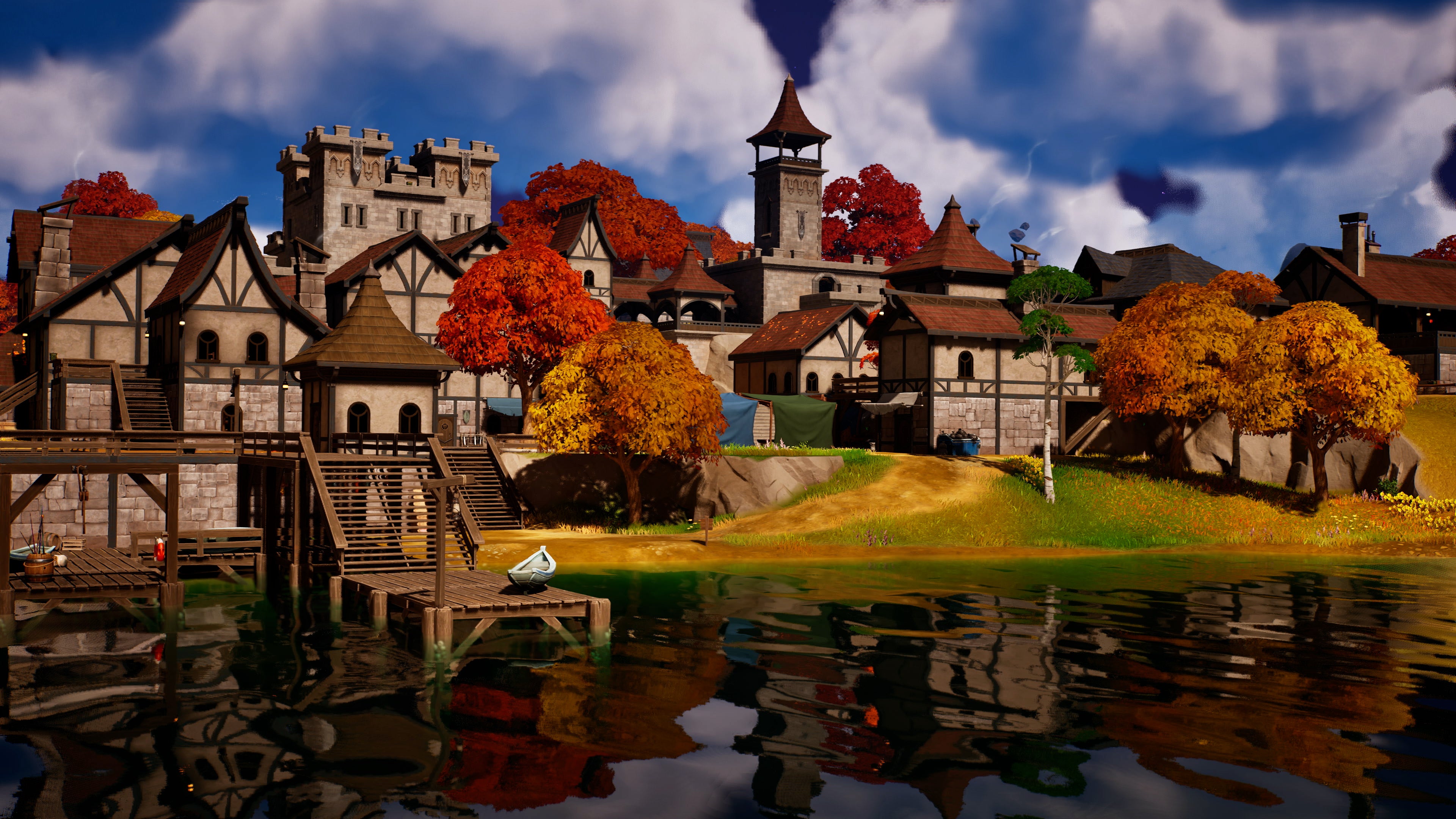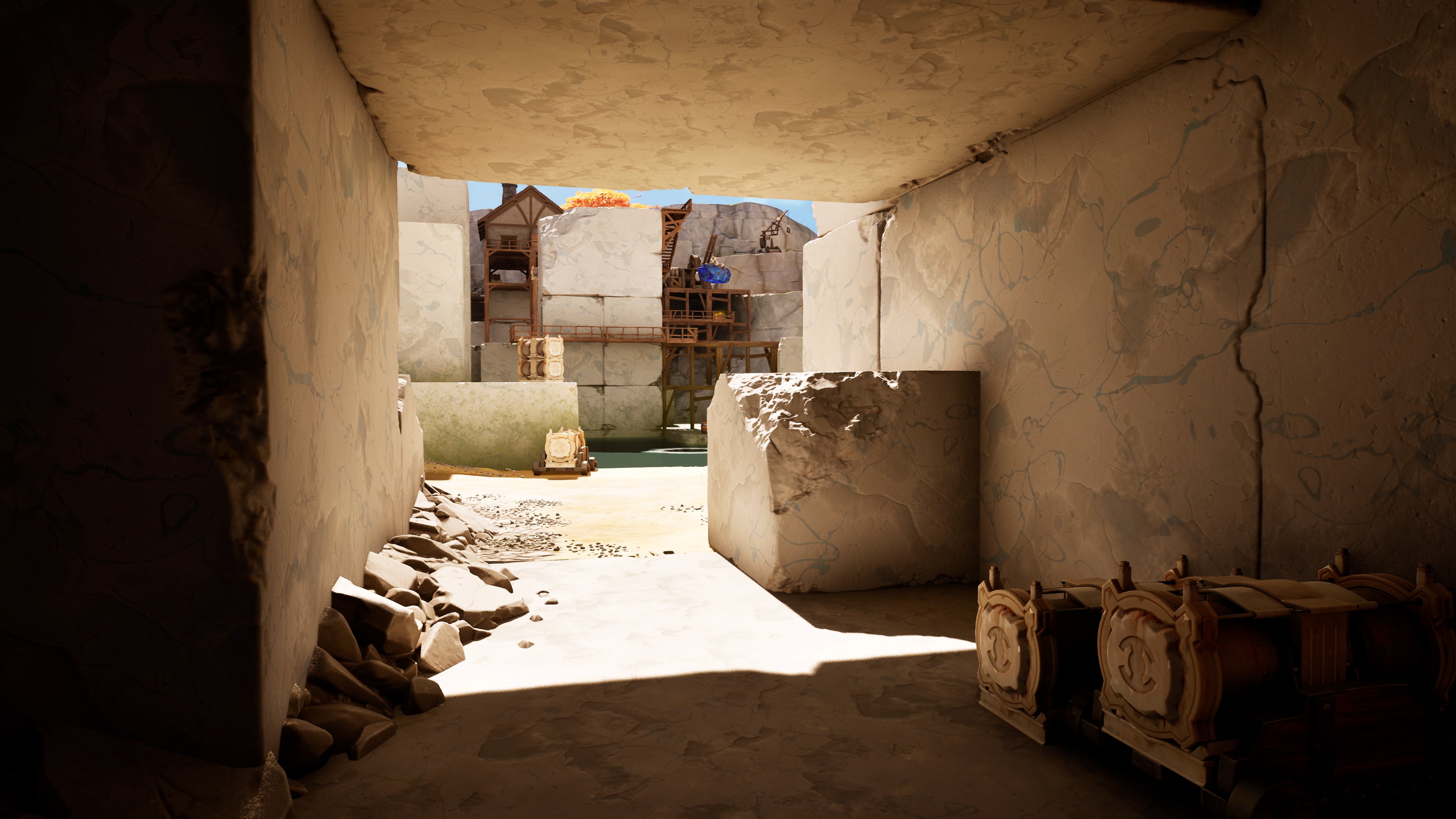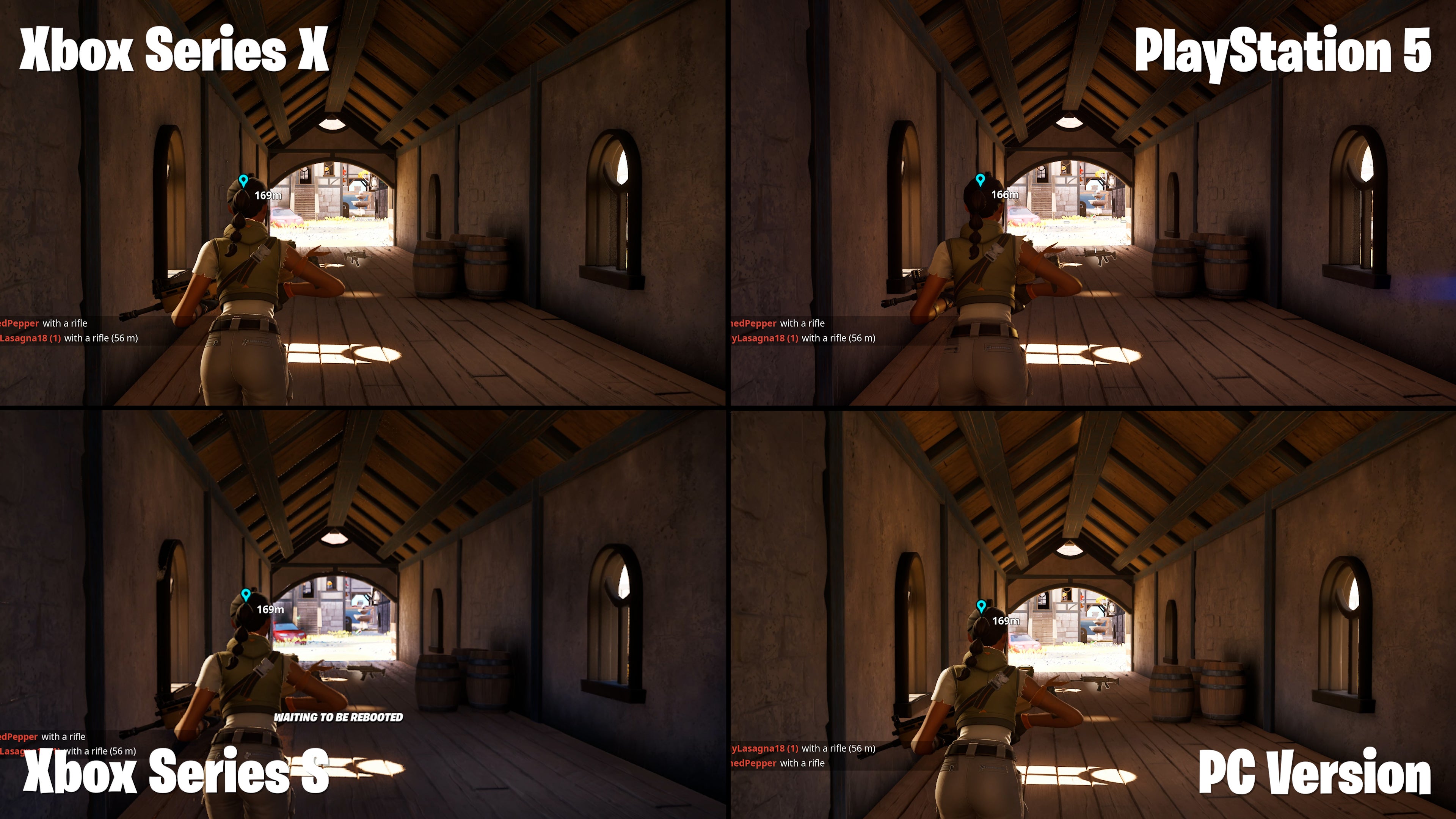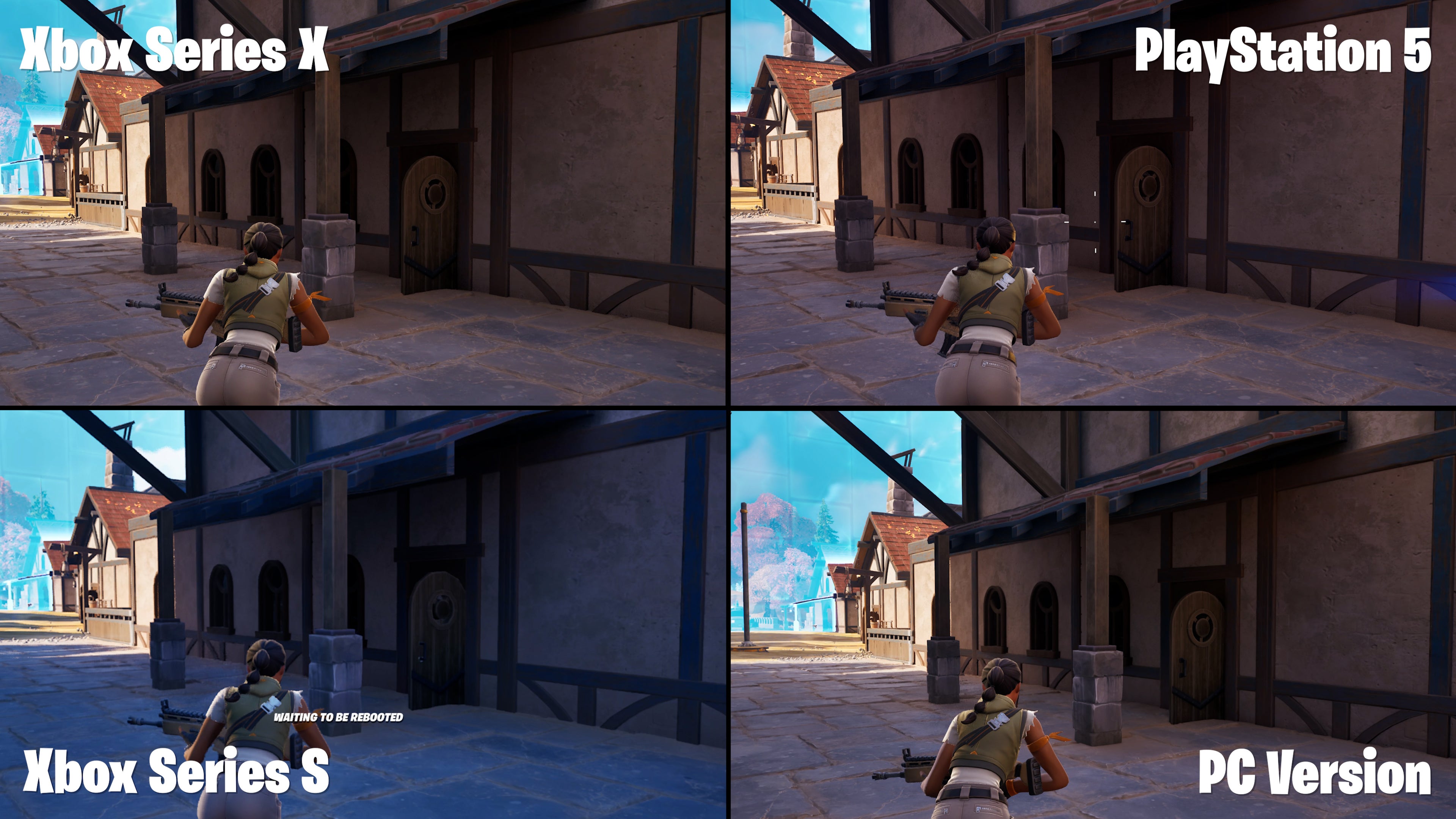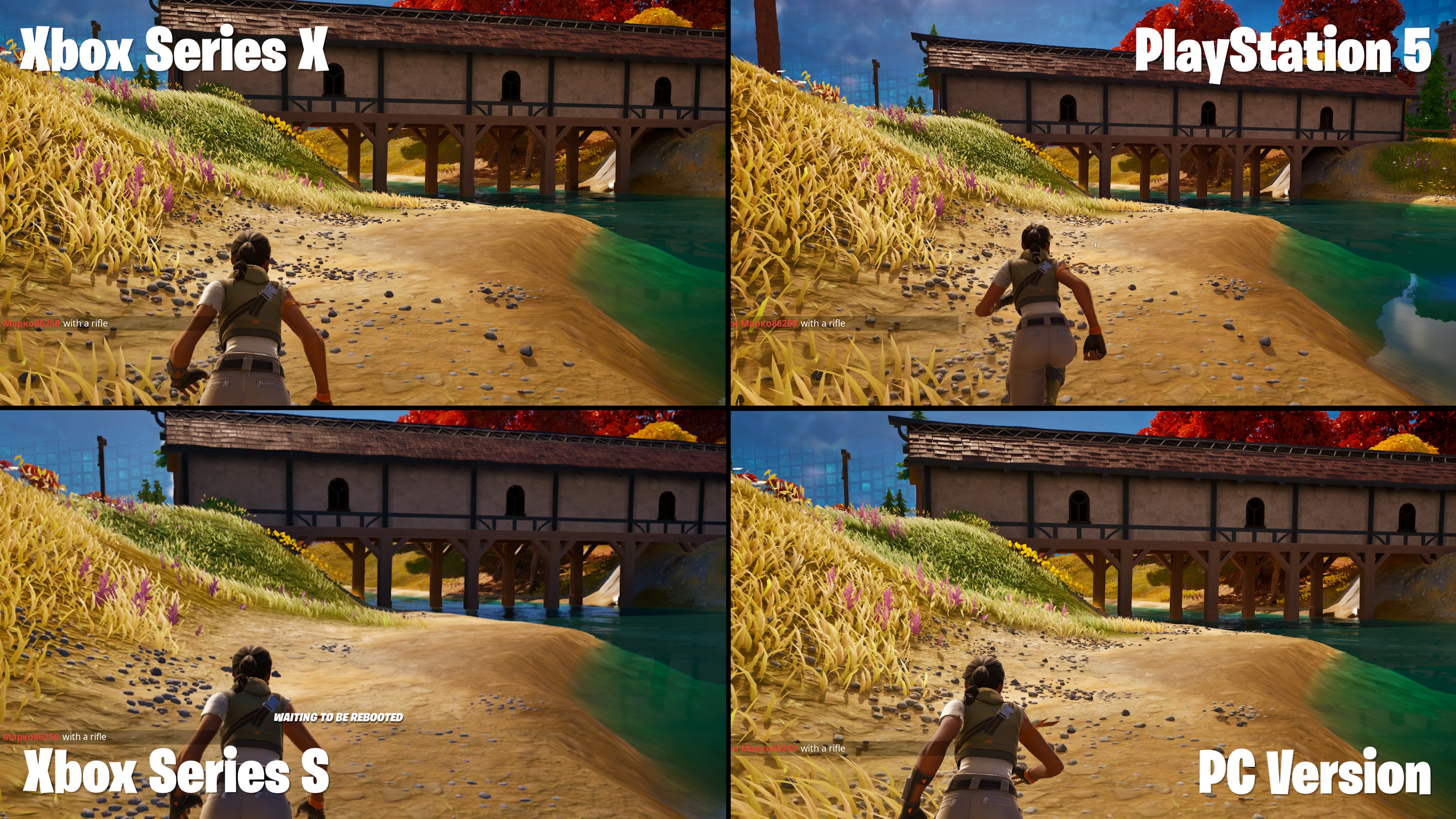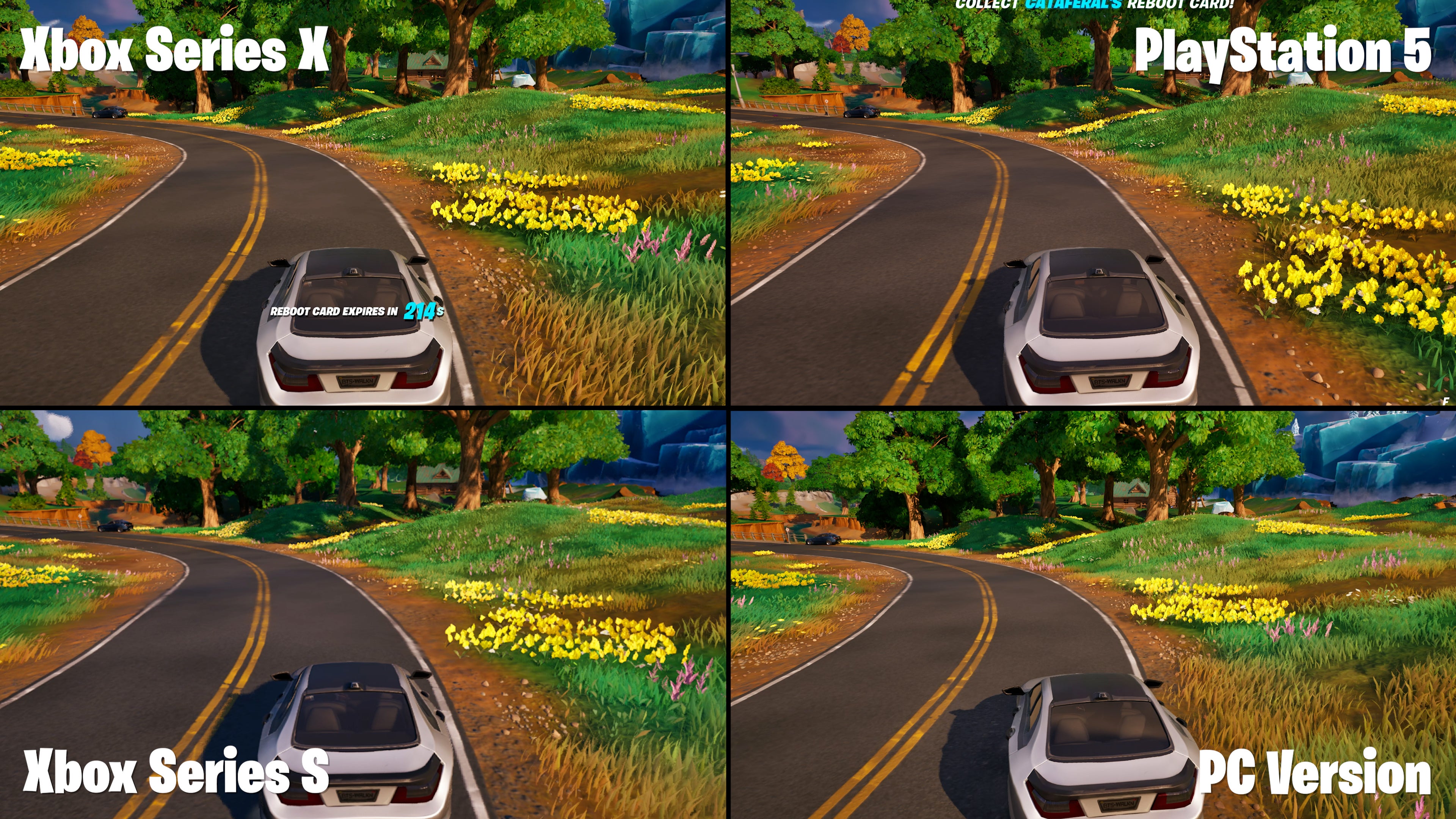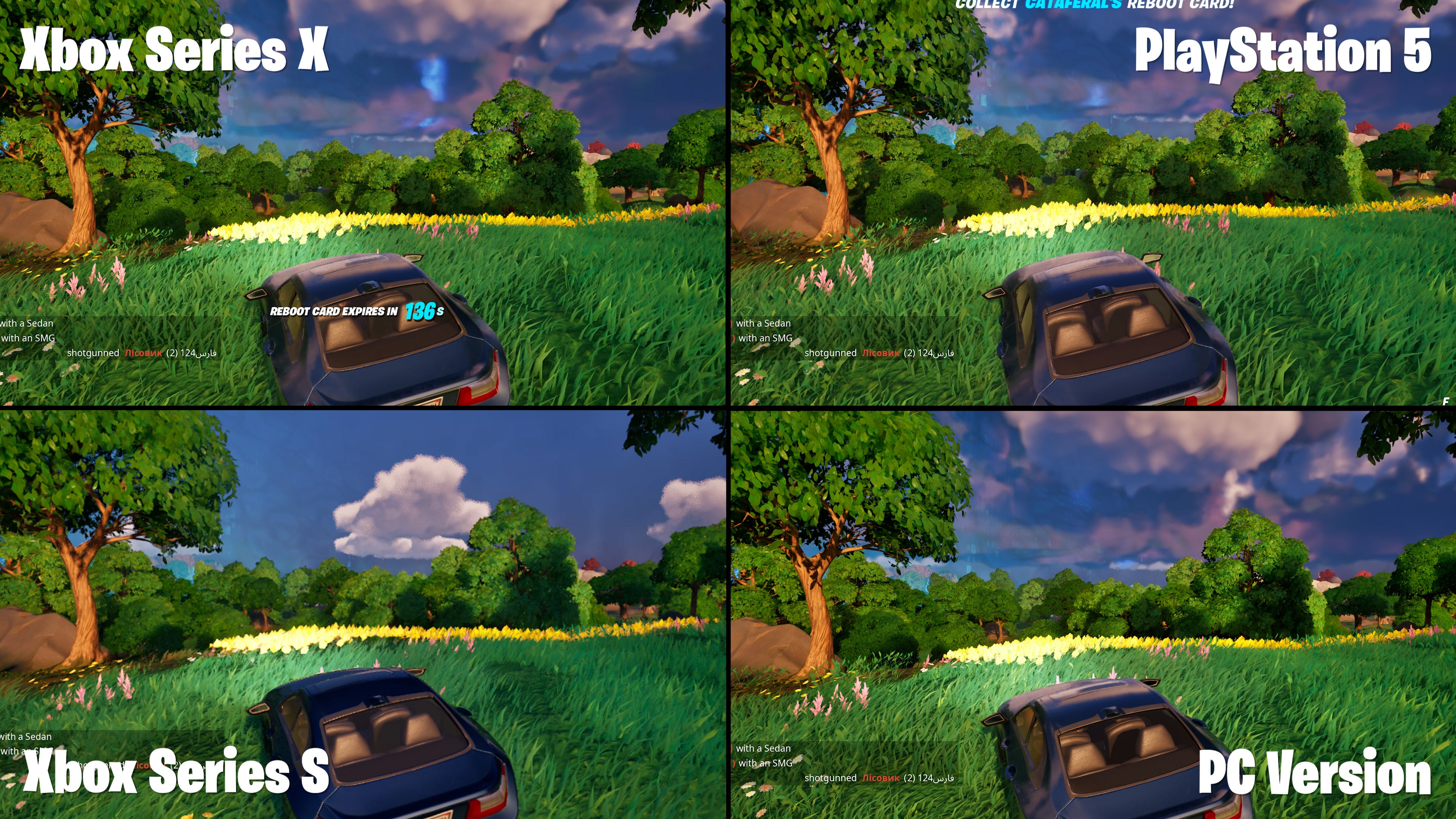With the company’s popular Fortnite battle royale title often working as a vehicle for showcasing Unreal’s capabilities, the latest chapter finally delivers on these promises by introducing the full suite of UE5 features across current-gen consoles and PC. Now, Fortnite runs at 60fps while harnessing the power of Lumen’s fully dynamic global illumination and reflections, in combination with the unprecedented detail made possible by Nanite.
It’s a transformative upgrade, and one that deserves a close look - both in terms of its visual accomplishments and its performance impact on all supported platforms, from PC and PS5 to Xbox Series X and S. The concept of getting UE5’s high-end features running on console at all is impressive, but to hit the 60fps target - even on Series S - is a serious achievement well worth a more in-depth analysis and it’s also interesting to see how the tech scales still further on PC. Helping us with our analysis were discussions earlier in the week with Epic’s Nick Penwarden, Epic’s VP of engineering.
Since its reveal more than two years ago, we’ve been anxiously anticipating the arrival of UE5 games using its key new technologies. While UE5 itself has been previously integrated into Fortnite, it’s only with the arrival of the game’s Chapter 4 update that Lumen, Nanite, Virtual Shadow Maps and Temporal Super Resolution have been integrated into the game. That means if you’re playing Fortnite on Xbox Series X/S, PS5 or PC, you now have access to these new technologies - albeit only in the 60fps mode on consoles (120fps mode uses the older, established render pipeline).
Before we go further, let’s clarify the UE5 basics: the star of the show is Lumen, which introduces ray-traced reflections and fully real-time global illumination (GI). Modelling the behavior of light has remained a key challenge in real-time graphics since their inception - for years, developers relied on a variety of pre-calculated solutions for lighting which all come with their own bodges and inaccuracies in order to be workable.
In Fortnite, the dynamic time of day means that the sun’s position is changing as you play, so faking realistic light and shadows is more challenging and the difference between the previous prec-calculated solution and RT can be stunning. In the new system, sunlight pours in through windows, transferring colour to nearby surfaces, while natural contact shadows form around objects.
Lumen is available in two flavours here, with software lumen calculating its global illumination using a simplified scene (using a mix of distance fields and screen-space tracing) while hardware Lumen, available on the PC version only at present, uses proper triangles for a more realistic look, including more accurate reflections and global illumination, and less light leakage. Hardware lumen also means that character models and other moving objects are included in reflections. However, imperfections remain even in the top-grade Lumen, with the video embedded above showing new light leaks in some scenes, no high-quality RT on glass, and characters and other complex objects appearing with black voids in reflections.
On consoles, software Lumen is the only option, which means that skinned meshes, such as characters, are reflected using screen-space calculation only, light leakage is more common and overall accuracy is slightly reduced. Regardless of platform though, Lumen’s GI ensures that lighting always delivers realism and looks beautiful. It also means that artists don’t need to fine-tune every scene - once material properties are configured, it just works.
Of course, there are some drawbacks - the underlying GI uses 1/16 rays per pixel, so a denoising algorithm is used to create a coherent result. This ensures performance remains high, but can lead to visible shimmering in some challenging situations - but I feel it’s a worthwhile trade-off. So, with Lumen, the world of Fortnite truly comes to life - at times resembling offline CG renders - but it’s not the only feature on display.
Nanite also makes it debut in Fortnite Chapter 4. This essentially enables a high level of geometric detail on static meshes, with its greater efficiency allowing for higher quality. Early UE5 versions didn’t support alpha-masked textures (eg grass and trees), but this was added in UE5.1. Interestingly though, the Fortnite devs opted instead to turn every tree, bush and blade of grass within the game into a polygon mesh - which, together with Nanite’s system for auto-LODs, ensures trees look visually distant at any distance, like other Nanite geometry.
It’s not just greenery either - many surfaces, including those that were just textures, were converted into a Nanite mesh - from fully-modelled house cladding to individual bricks and stone. It’s incredible to see the amount of detail evident even at extremely close range. So while the game remains stylised, the level of detail per object is massively increased and there are no more visible LOD transitions once an object is loaded.
However, you can still notice pop-in while playing, which is because due to the memory and CPU costs of the new system, the game’s only able to display a specific area around the player, with more distant objects being replaced by a single simplified HLOD mesh. That’s why, even with Nanite, pop-in remains a tricky problem to solve. Even so, it’s amazing to zoom in and out of from various objects while maintaining visual stability. It’s far more coherent and consistent than what we typically see in large open world games.
This combination of Lumen and Nanite is potent then and Fortnite really demonstrates what is possible with the new engine - even when retrofitting an existing title. However, other new feature are also here and worth a brief mention. Temporal super resolution (TSR) replaces the previous TAAU and offers excellent visual fidelity, akin to DLSS or FSR2, with a 4K-like appearance despite much lower internal resolutions on Series X and PS5.
There are also virtual shadowmaps, which result in unified and high-quality shadow casting, accurately projecting the shadows from detailed Nanite meshes right down to individual blades of grass or small stones. Shadows remain visible even at a long distance too, increasing the cohesiveness of the map. It’s a full replacement for other shadow techniques such as cascaded shadow maps and avoids many of those drawbacks. It isn’t cheap, however, and on console, there is visible noise evident when closely examining shadows but it’s still pretty impressive overall. It’s also possible to exclude objects from the virtual shadow map to increase performance, which is used on Series S.
The key here is that all of this tech combines with other UE5 elements, such the new large world partitioning feature, to create what amounts to a fantastic demonstration of the engine. It hints at big things to come from developers that have switched to Unreal and also suggests that, until now, few games have really demonstrated what these new machines can do. In fact, all current versions of Fortnite now use UE5 to ease development - even on Switch, where there isn’t quite enough horsepower to enable the new features we’re discussing today.
Before we wrap up, you might be interested to know how the game runs on each platform in terms of performance, resolution and - yes - shutter compilation stutters. Let’s start with the good stuff: based on our conversations with Epic, both PS5 and Series X target 4K via temporal super resolution, with an internal resolution of anywhere from 864p to 1836p - a massive range. On average, PS5 delivers 55 percent of 4K on each axis, while Series X is slightly higher at 59 percent. Owing to the way image reconstruction works, it’s very difficult to see any difference at all between the two versions.
Series S is understandably lower-res, with an internal resolution of 540p to 1080p, averaging 73 percent of 1080p, but also loses reflections on glossy surfaces (eg water), the resolution of some effects is lower and there’s also a reduction in ground clutter. Honestly though, Series S looks surprisingly similar to the Series X and PS5 versions. It’s the omission of Lumen reflections that is most impactful - bodies of water can lose all reflections depending on the angle as it’s reliant just on screen-space information.
In terms of performance, things are surprisingly good - at least on console. In our testing, we were basically always locked to 60fps. On PC though, we did see some shader compilation stutter - less than we’d expect on a UE4 title without asychronous shader compilation, but encountering new content or traversing the world in a vehicle did result in some dropped frames. This would gradually abate as the shaders are eventually encountered and cached, but game and driver updates would restart the process.
Epic is aware of the problem, and speaking to the VP of engineering at Epic Games, Nicholas Penwarden, the firm’s shader compilation is still imperfect in some ways. For example, characters might be streamed into the world in a different way than other assets, so the shader compilation might not handle them well - and similarly, given that Fortnite Chapter 4 partitions the world into zones for Nanite, using vehicles to rapidly enter new zones could require shaders to be compiled faster than is currently possible. So future versions of Unreal Engine, and updates to Fortnite Chapter 4, we should get a more tailored system to prevent these stutters. The Unreal Engine staff do seem to be taking the issue seriously, so hopefully we will see some movement on this front.
Overall, it’s exciting to try out Nanite, Lumen and other Unreal Engine 5.1 features in a shipping title, and it’ll be fascinating to see how other developers adopt these features - and how the engine continues to evolve - in the future.
